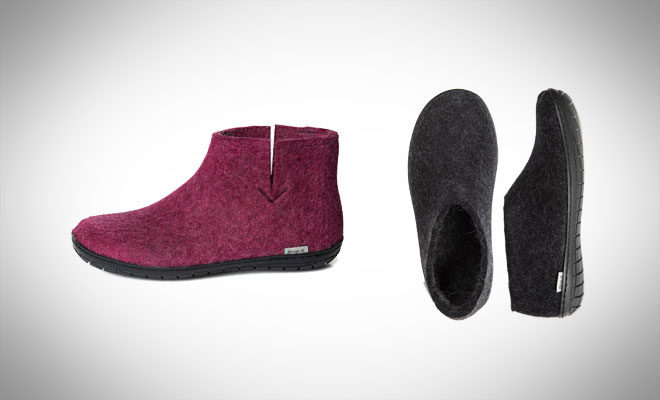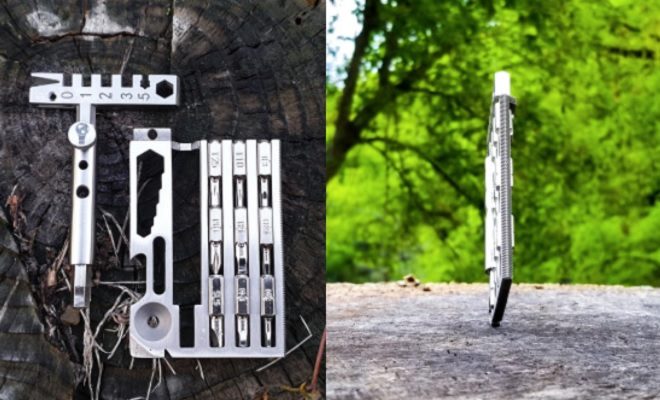Best New Gear: November 2019
Fresh everyday packs, great new options for smaller carry setups, and our fifth Carryology collab all dropped in November. Discover this and more as we dive into the month’s best new gear…
Travel
Houdini Power Air Houdi

The Houdini Power Air Houdi (available for men and women) brings style, sustainability and practicality together in a piece you can wear year round and stash in your travel carry for urban and outdoor trips alike. Synthetic fabrics contribute towards microplastic pollution. But the garment is made from Power Air, a new fabric from Polartec that encapsulates the microfibers in order to significantly reduce microfiber shedding. Made with 54% recycled polyester, the Power Air Houdi sheds up to five times less than regular high-quality fleece fabrics. And with its breathable, warm construction offering four-way stretch, it suits both active and casual use.
Prometheus Design Werx Tycho Down Hoodie

When cooler weather comes calling, a suitably toasty outer layer will allow you to still get out and explore. And PDW have created a premium piece with their Tycho Down Hoodie. The jacket features DownTek™ 850 fill power hydrophobic goose down and a 20D micro-ripstop shell with a DWR finish. So you’ll have sufficient time to sling on a weatherproof shell or head for cover if inclement weather strikes. With its ability to pack down small and offer a great warmth-to-weight ratio, it’s easy to pack in your everyday or travel bag. Plus for added functionality the jacket stows inside an inbuilt stuff-sack pocket and can be used as a camp pillow. And it comes with a detachable stuff-sack that can be converted into a travel neck pillow.
Triple Aught Design Peregrine XC Pant

Triple Aught Design are firm believers in embracing adventure. And their women’s Peregrine XC Pant helps you embrace it wherever the day leads. Versatile for urban roaming and excursions off the beaten path, the pant is made with tough and comfy stretch canvas with a DWR finish. It features understated cargo pockets, rollable cuffs, contoured darts, and a shaped waistband and is designed to blend freedom of movement with low-key style.
Matador Freerain32 Packable Backpack

Packable backpacks can leave a lot to be desired. But Matador serves up impressive functionality with their Freerain32 Pack. The lightweight bag features a waterproof main compartment, a comfy suspension with a waist belt and sternum strap, hydration bladder compatibility, and exterior attachment points for trekking poles or other gear. All in a design that packs down small to store in luggage or your car until needed.
Roark 5-Day Mule 55L Bag

Need a workhorse for multi-day travels that takes on smooth and rough terrain alike? The Roark 5-Day Mule is up to the challenge. Built to be tough, comfortable and practical, it’s made with a water-repellent and durable combination of 1000D nylon plainweave and 1050D nylon ripstop. The pack includes a stowable hip belt, top and side grab handles, and side compression straps for a secure load and external carry options. A range of quick-access pockets and a laptop compartment organize your essentials and tech, while the wide opening allows for easy packing and gear retrieval.
Tortuga 45L Women’s Setout Backpack

Tortuga follows on from the success of their 35L Women’s Setout Backpack with the launch of their 45L Women’s Setout Backpack. Made from recycled polyester, the carry-on pack offers all of the functionality of the original Setout Backpack but tailors the comfort with a women’s-specific suspension system. A clamshell main compartment and dedicated tech compartment keep gear within easy reach, while the padded removable hip belt and contoured shoulder straps provide extended comfort even with heavier loads.
Urban
Black Rubber Sole Glerups

Slipper comfort in shoes that can venture outdoors when duty calls or keep you snug indoors? Glerups delivers with their range of comfy and practical footwear. And they’re following up their 2018 25th anniversary limited edition low boot by introducing the black rubber sole across all their silhouettes. Available in a variety of colorways, you can treat your feet with Boot, Shoe and Slip-on options. Made with natural wool uppers and black rubber soles, they’re enticing for lounging at home but ready to step out for a quick trip to the mailbox, taking out the trash or garden excursions.
Peak Design Everyday Line V2
Peak Design’s Everyday Line garnered a global fanbase with its deft blend of everyday and camera carry functionality. But Peak Design didn’t stop there, revamping the line for even better functionality. The new Everyday Line V2 refreshes Peak Design classics, while also introducing new designs. The collection features the Everyday Backpack, Everyday Sling, Everyday Tote and Everyday Messenger, while also welcoming the new Everyday Backpack Zip, Everyday Totepack, and a 3L Everyday Sling. All offering Peak Design’s trademark great access, weatherproof construction, and flexible organization.
Full Windsor Magware Magnetic Flatware

Disposable plastic cutlery is a huge environmental pollution problem. But Full Windsor have a dapper solution on hand with their Magware magnetic cutlery. Designed to be easily portable, long-lasting and convenient to clean, the lightweight aluminum set includes a fork, spoon, and knife that secure together magnetically. The set comes in five colorways and is a more sustainable approach for campsite dining, work lunches, picnics, or simply grabbing a bite to eat on the go.
bagjack IWT Muff

In chilly winter conditions sometimes gloves just can’t keep the bite out. But if you’re tired of cold hands the folks at bagjack have a hot answer to your problems. Their IWT Muff is a wearable USB-powered heating system that can be used by itself or paired with their Sniper Bag. The IWT Muff can be used to warm your hands or stored beneath a jacket to warm your core while out and about. Additionally, you can use it to keep small electronic items warm to maintain battery life. The heating element provides a 10W output.
QWSTION Zip Pack Bananatex

QWSTION welcomes a new addition to their sustainably made Bananatex family with the Zip Pack. Designed to store daily essentials for work or the weekend, the Zip Pack can be carried as a backpack, tote or briefcase thanks to the modular handle. Two interior pockets and a padded 15″ laptop sleeve keep essential items in check, while top and side access lets you easily get to gear throughout the bag.
The James Brand The Carter

The James Brand call the Carter their most advanced EDC knife. Take a closer look and you’ll see why. The knife features an ambidextrous slide lock that can be used one-handed. The Japanese-made VG-10 stainless steel blade can be paired with either G10 or Micarta scales. And the Carter features a thumb disk opening and reversible deep carry pocket clip that can be swapped out for an included lanyard insert.
Grovemade Task Knife

Art meets function in Grovemade’s Task Knife. An attractive display piece that also performs as a daily blade for day-to-day tasks. The Task Knife comes in a choice of raw stainless steel, matte black ceramic coated stainless steel, and raw brass. And it can be paired with an optional hardwood stand to create an eye-catching set for your desk.
Chiseled Design Distinct™ Multi-tool

A lot of multi-tools are bulky and not convenient to carry. But the Chiseled Design Distinct™ Multi-tool offers over 30 functions in a lightweight and thin design that slips into a pocket for easy carry. The multi-tool is TSA compliant and customizable to changing needs. So you can leave the bulky tool box at home and carry however much you need, wherever you need to go.
DSPTCH Daypack Anniversary Edition

DSPTCH’s Daypack Anniversary Edition offers a sleek silhouette, premium materials and everyday functionality all in one. The limited edition Daypack is made in the USA with a water-repellent 5oz Dyneema Composite Fabric and backed by a lifetime guarantee. Features include a suspended 15″ laptop compartment, tablet sleeve, interior water bottle pockets, and an inbuilt cord management system.
KILLSPENCER AirPods Keychain

Looking for a way to keep your AirPods secure on the go but at the ready? KILLSPENCER have you covered with their AirPods Keychain. Handcrafted with full-grain leather, the keychain comes with removable industrial 3M adhesive, a metal split ring, and Isopropyl alcohol wipes. The keychain is simple to attach to your AirPods case, making it easy to secure the case to a bag, keychain or belt loop for on-the-go access.
CODEOFBELL ANNEX LINER

Got more than your pockets can handle but not enough to warrant a large bag? The CODEOFBELL ANNEX LINER is designed to slot into this carry sweet spot. The bag comes with a removable shoulder strap and two compartments, both of which are expandable so you can carry more when required, or keep things compact with smaller loads.
Chrome Industries BLCKCHRM 22X Collection

Inspired by innovative materials and new methods of craftsmanship, the Chrome Industries BLCKCHRM 22X Collection is crafted with a 22X Nylon shell with Cordura TPX Durable Laminate Technology. Resulting in pieces that are tough, weatherproof, yet light for demanding urban use. The collection includes the BLCKCHRM 22X Yalta 3.0, BLCKCHRM 22X Bravo 3.0, and BLCKCHRM 22X Shoulder Pouch, taking care of your larger and smaller carry needs alike.
1733 Side Pack

EDC, day hikes, travel…wherever you’re heading with a smaller setup, the 1733 Side Pack is a trusty sidekick to keep your gear in check. Made in Chicago by Bearse USA, the bag is crafted with YKK AquaGuard zippers and X-PAC VX21 fabric in a choice of colorways, offering lightweight yet durable protection from the elements. Carry it around your waist, across your back or chest, or by hand to suit your needs. And score a sweet $30 off the retail price between 30 November and 20 December 2019 during the Side Pack pre-sale, with shipping on 6 January 2020.
Cargo Works Croxx Daybreaker Backpack

Work to play, week to weekend, the Cargo Works Croxx Daybreaker Backpack takes it all in stride. Built with understated style and practicality in mind, it’s made with durable 400D Cordura Nylon for a lightweight but tough bag that stands up to regular use. The wide-opening main compartment, separate 15″ laptop compartment, and quick-access pockets keep gear easily accessible throughout the day. It’s available for pre-order at a discount now, with shipping scheduled for 10 January 2020.
Bedouin Foundry x Carryology Balian Sling

For our fifth collaboration project, we teamed up with one of our all-time favorite brands to custom design a piece from the ground up. Beyond honored to partner with Bedouin Foundry, we created the limited edition Balian Sling. Handcrafted in England with premium materials, excellent craftsmanship and everyday or travel functionality, this sleek piece elevates your EDC with its discreet practicality and is built for a lifetime of trusty use.





 Carry Awards
Carry Awards Insights
Insights Liking
Liking Projects
Projects Interviews
Interviews











